Shekere vs Cabasa: A Guide to Picking the Right Shaker
Confused about the shekere vs cabasa debate? You’re not alone. Many people see these beaded percussion instruments and think they’re pretty much the same thing. But for anyone who makes music, knowing the difference is key to getting the right groove.
While both are shakers, they come from different parts of the world and are built in totally different ways. This changes everything about how they sound, how they feel to play, and where they fit in a song.
This guide will break it all down for you. We’ll look at what they’re made of, where their stories began, and how you can use their unique sounds.
By the end, you’ll know exactly when to reach for a shekere and when a cabasa is the perfect tool for the job.
What’s the Biggest Difference in How They’re Built?
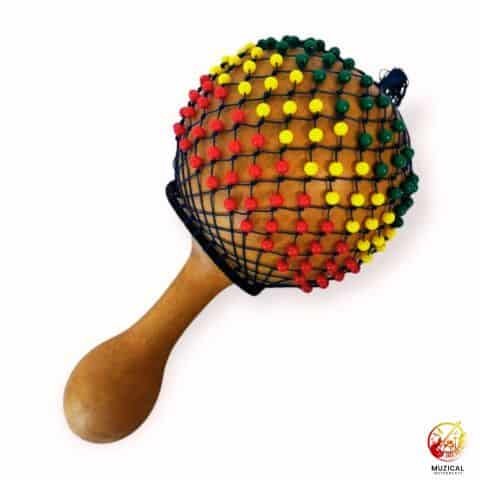
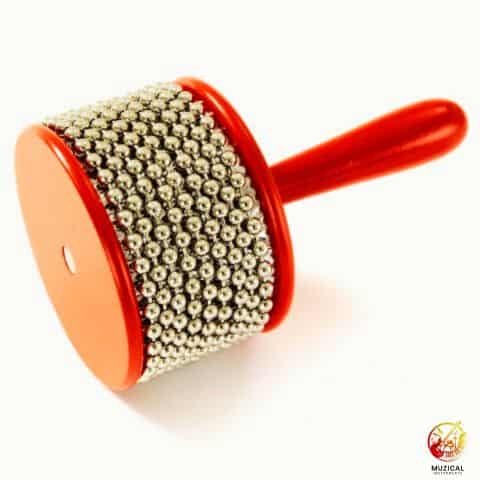
The first thing to understand in the shekere vs cabasa comparison is what they’re made of. This is where they take two completely different paths, and it’s the main reason they sound so distinct.
A shekere is an all natural instrument. Its body is a real, dried gourd that has been hollowed out. A net covered in beads, shells, or seeds is then tied around the outside. Because every gourd has a slightly different shape and thickness, and the beads can vary, no two shekeres sound exactly the same.
They are unique, handmade items. The sound comes from the beads hitting the hard surface of the gourd, creating a loud, earthy, and complex rattling sound. You can also tap the bottom of the gourd to get a deep, hollow drum tone.
On the other hand, a cabasa (the modern type, called an afuche-cabasa) is a manufactured instrument. It has a handle attached to a cylinder, which is usually made of wood. Wrapped around this cylinder are loops of a steel ball chain.
The sound is made when you twist or shake the handle, causing the metal beads to scrape against the wood. This design is the same every time, so cabasas have a very consistent and predictable sound. It’s a crisp, sharp, metallic sizzle, a much more controlled and focused sound than a shekere.
Think of it this way: a shekere is like a one of a kind, handmade clay mug, while a cabasa is like a perfectly smooth, factory made glass.
The Shekere vs Cabasa Story: Where Do They Come From?
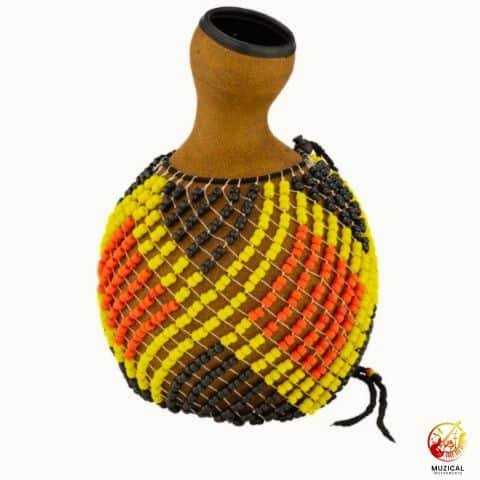
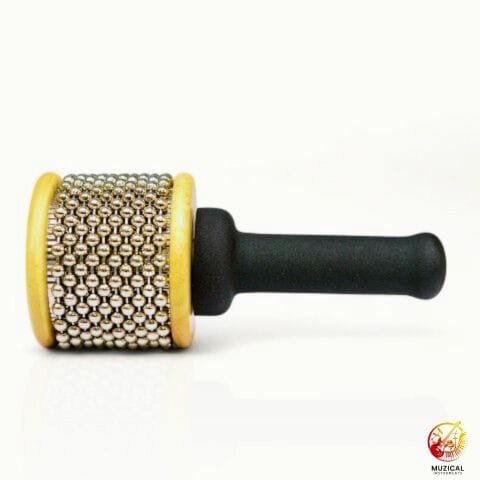
The history behind these instruments tells you a lot about their sound and purpose. The shekere vs cabasa story spans from ancient traditions in Africa to modern music in Latin America.
The shekere has deep roots in West Africa, especially with the Yoruba people of Nigeria. For centuries, it has been a vital part of ceremonies, festivals, and community gatherings. It’s a powerful percussion instrument designed to be heard over loud drumming and singing.
Its job is to provide a big, raw, and driving rhythmic texture that makes you want to move. This history is why the shekere has such a bold and organic voice, fitting perfectly into Afro Cuban jazz, folk music, and other styles that need an earthy feel.
The cabasa has a much more recent history. While it was inspired by African shakers, the modern metal version we know today was developed in Latin America during the 20th century.Musicians playing genres like salsa and bossa nova needed a shaker that could produce a sharp, clear rhythm to cut through a full band with horns and piano.
The cabasa was the solution. It was designed to be a precision tool for creating tight, clean rhythmic patterns. This makes it a go-to instrument for studio recording and genres like funk, pop, and disco where a clean groove is essential.
| Feature | Shekere | Cabasa (Afuche-Cabasa) |
|---|---|---|
| Origin | West Africa | Latin America (modern version) |
| Main Materials | Dried Gourd & Natural Beads | Wood & Steel Bead Chain |
| Cultural Use | Traditional, Ceremonial | Modern, Band Music |
| Sound Vibe | Earthy, Loud, Organic | Crisp, Metallic, Controlled |
Which One is Easier to Play?
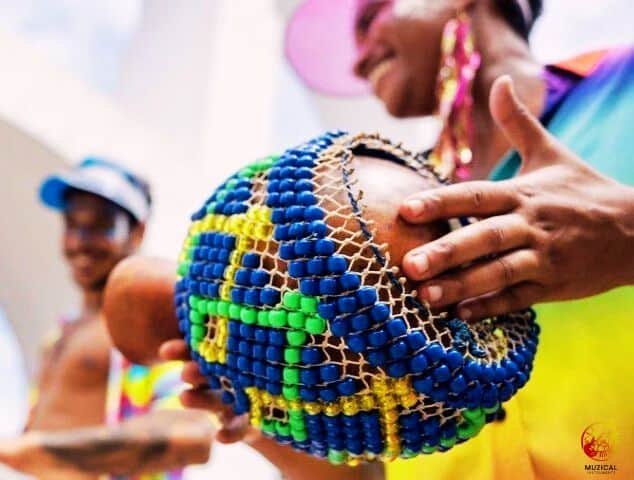
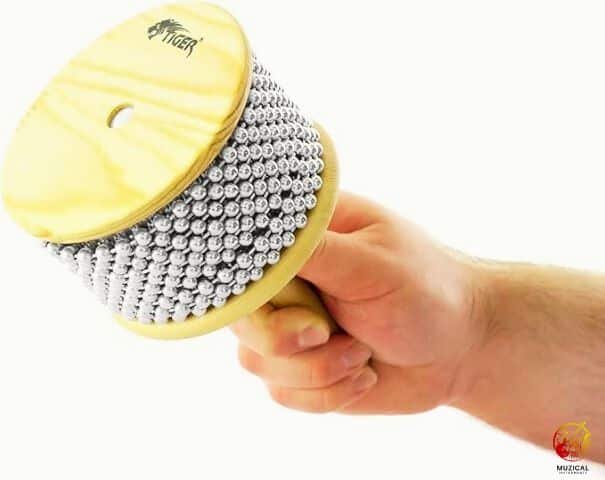
This is a common question, and the simple answer is that the cabasa is easier to start with, but the shekere lets you do more once you learn it.
You can pick up a cabasa and make a decent sound right away. Just hold the handle, twist your wrist, and you’ll get that classic “tss-tss-tss” sizzle.
You can also shake it for a shorter, rattling sound. The main challenge with a cabasa is playing with perfect timing. Because its sound is so clean and sharp, any mistakes in your rhythm are easy to hear.
The shekere takes a bit more practice to get the hang of, but it offers a wider range of sounds. It’s a much more physical instrument. Here are a few ways to play it:
- Shake it: Creates a broad, rattling soundscape.
- Tap the bottom: Use your free hand to tap the base of the gourd for a deep bass tone.
- Throw it: Gently toss and catch it to make the bead net slap against the gourd for a loud, sharp accent.
Learning to combine these moves to create interesting rhythms is the real challenge. But once you do, you have an instrument that can be both a shaker and a drum. This makes the learning curve for the shekere vs cabasa a bit different for everyone.
Pro Tip: How to Hold Them
For a cabasa, hold the wooden handle and let your other hand rest lightly on the metal beads. You can then twist the handle or rub the beads with your hand to create different rhythms. For a shekere, hold it by its neck with one hand and cup the bottom with your other. This gives you the control to shake it, spin it, and tap the bottom for that bass sound.
How Are They Used in Songs?
In the studio or on stage, the choice of shekere vs cabasa completely changes a song’s feel. They may both be shakers, but they do very different jobs.
The cabasa is a specialist. It’s perfect for adding a steady, driving pulse to a track. That sharp, metallic sizzle is great for playing fast, repeating patterns (like sixteenth notes) that sit on top of the beat.
Think of the rhythm in many funk and disco songs, that’s often a cabasa keeping the energy high. Its controlled sound is also great for recording because it’s easy to mix and doesn’t clash with other instruments.
The shekere, on the other hand, is all about creating texture and atmosphere. Its sound is huge and fills up a lot of space. It can be used to create a gentle, rustling sound in the background of a quiet acoustic song, or it can be the loud, main rhythmic voice in a percussion heavy track.
Because its volume can go from a whisper to a crack, it adds a very human and “live” feeling to music. The choice in the shekere vs cabasa matchup often comes down to whether you need precision or a big, organic vibe.
| Feature | Shekere | Cabasa (Afuche-Cabasa) |
|---|---|---|
| Main Job in a Song | Creating a wide, organic texture | Playing a tight, steady rhythm |
| Best For | Live music, acoustic songs, world music | Studio recording, funk, pop, salsa |
| Sound Footprint | Big and wide, fills lots of space | Sharp and narrow, cuts through |
| Timbre | Warm, earthy, rattling | Bright, metallic, sizzling |
Can You Use One Instead of the Other?
So, what if you only have one? Can you swap them? Yes, but just know that it will totally change the vibe of the song. The decision in the shekere vs cabasa substitution game is a creative one.
If a song calls for a tight, funky cabasa part and you use a shekere instead, the rhythm will sound much looser, bigger, and more raw. It won’t have that clean, sharp sizzle. This could be a really cool and unique choice, but it won’t sound like the original.
On the flip side, if you use a cabasa on a track that needs the big, earthy feel of a shekere, the sound might feel a bit thin and weak. You’ll lose the deep tone of the gourd and the wide, surrounding rattle. The cabasa just can’t create the same amount of sonic atmosphere. The choice of shekere vs cabasa is really about what the song needs to feel right.
Final Thoughts: Pick the Sound That Fits Your Vibe
In the end, the shekere vs cabasa comparison shows us two amazing percussion instruments with very different personalities. The shekere is ancient, natural, and powerful, offering a huge range of earthy sounds. The cabasa is modern, precise, and controlled, delivering a crisp rhythmic sizzle every time. Neither one is better, they’re just different tools for different musical ideas.
The best way to truly understand the shekere vs cabasa difference is to hear it for yourself. Look up videos of musicians playing each one. Better yet, go to a music shop and try them out.
Once you feel them in your hands and hear their unique voices, you’ll know exactly which one your next song is calling for.
FAQ: Shekere vs Cabasa
1. What is the main difference between a shekere and a cabasa?
You’ll notice the shekere is made from a dried gourd covered with a net of beads, crafted in West Africa. It rattles when shaken, twisted, or slapped. The cabasa, on the other hand, has a cylinder wrapped with steel ball chains and mounted on a handle, so it scrapes when twirled or rotated.
2. Are shekere and cabasa the same thing?
No. Although they both are rattling-type percussion, their build and cultural roots differ. The shekere comes from West African traditions with gourds and beads, while the metal afuche-cabasa version came later and is used in Latin jazz. The cabasa produces a metallic scrape rather than a rattle.
3. Which instrument is louder: shekere or cabasa?
You’ll find the shekere generally louder, its beads strike the gourd and that’s bold and resonant. The cabasa is more subtle, its metal chains make a scratchy, controlled sound and so it’s ideal for adding finesse rather than volume.
4. Where did these instruments originate?
The shekere started in Yoruba regions across West Africa, Nigeria, Benin, Togo and also appears in Latin American folk traditions. The cabasa’s roots trace back to an African gourd shaker, but the modern metal version afuche-cabasa was popularized in Latin jazz ensembles in the 1960s by Latin Percussion founder Martin Cohen.
5. Can “afuche” mean something different from “cabasa”?
Yes, “afuche” commonly refers to the metal cabasa, the modern, mass-produced version. Not every cabasa is an afuche. The original gourd types like shekere or agbe are separate from the metal version.
6. How do you play a shekere vs a cabasa?
With a shekere, you can shake, slap, twist, or tap the gourd to make different textures of sound. The cabasa is played by holding its handle and rotating or tilting it so bead chains scrape against the cylinder, pressure and speed create the rhythm.
